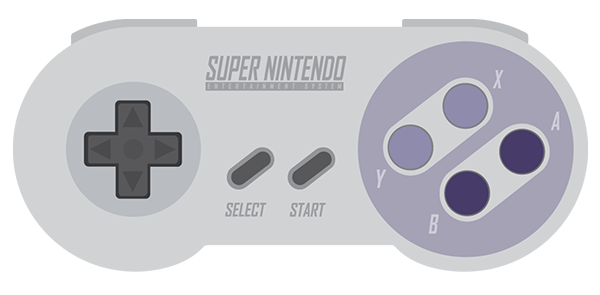Stepping back into the vibrant, chaotic world of Acme Acres always brings a smile, especially when it involves a quality retro game. For many of us who grew up with the Super Nintendo, Tiny Toon Adventures: Buster Busts Loose for the SNES stands out as a licensed game that genuinely captured the spirit of the beloved animated show. Developed by the legendary Konami during their SNES prime, this platformer starring Buster Bunny offered a wild, unpredictable ride that felt like playing through a series of lost episodes.
A Konami Classic? The Developer Magic
Konami in the 16-bit era was synonymous with top-tier licensed games. From Teenage Mutant Ninja Turtles to The Simpsons, they had a knack for translating popular cartoons into fun, polished video games. Tiny Toon Adventures: Buster Busts Loose is no exception. They understood the irreverent humor and fast-paced nature of the show, creating a game that felt both challenging and full of personality. It wasn't just a cash-in; it was a game made with care for the source material.
More Than Just Cartoons: Unique Gameplay
At first glance, Buster Busts Loose might look like a standard platformer, but it throws in some unique mechanics that define the experience.
- The Drop Kick: Buster's primary attack is a somewhat awkward but effective drop kick. It takes a little getting used to, but it gets the job done against the various wacky enemies you encounter.
- The Mad Dash: This is where the game truly shines and sets itself apart. Buster can build up a meter and perform a "mad dash," allowing him to run at super speed, plow through enemies, and even run straight up walls! Mastering this dash is crucial for navigating many levels and uncovering secrets. It feels chaotic but incredibly satisfying when pulled off correctly.
Unlike many platformers of the time, there aren't many power-ups beyond health (carrots!) and extra lives. The focus is squarely on using Buster's core abilities, particularly that defining dash, to tackle the diverse challenges the game throws at you.
A Trip Through Acme Acres: Level Variety
One of the game's greatest strengths is its incredible level variety, perfectly mirroring the episodic nature of the show. Instead of a single overarching plot, you jump between completely different scenarios presented as "episodes."
- You'll start at Acme Looniversity, navigating classrooms and avoiding escaped critters.
- Then you might find yourself in a Wild West train chase requiring precise dashing.
- Perhaps a spooky mansion full of ghouls, or even a parody of a space opera!
Each level has its own theme, enemies, and often, unique mechanics or mini-games (like the football stage or the giant pinball machine). This constant switching keeps the gameplay fresh and unpredictable, much like tuning into a new episode of the show. You'll also spot plenty of cameos from the wider Tiny Toons cast!
After clearing a stage, you often get a chance at bonus rounds via a spinning wheel, offering fun ways to earn extra lives through simple mini-games like tile puzzles or weight guessing.
The Challenge Factor
Tiny Toon Adventures: Buster Busts Loose offers a decent challenge, though it varies depending on the difficulty setting.
- Normal Mode: Generally considered quite forgiving. Carrots (health) and extra lives are plentiful, especially if you do well in the bonus games. The main challenge here is mastering the dash, which can be frustrating initially, especially with wall-jumping.
- Hard Mode: This is where things ramp up significantly, often starting you with only one heart. It becomes a much more demanding experience, requiring near-perfect execution.
Some levels, particularly auto-scrolling sections, demand precise timing and mastery of the dash, which can lead to frustrating deaths until you learn the patterns. However, the game feels more "demanding" in execution than inherently unfair in design, assuming you're playing on Normal.
Looks and Sounds Like Tiny Toons
Visually, the game is vibrant and colorful, doing a great job of capturing the look and feel of the cartoon. Character sprites are well-drawn and recognizable, even if some animations can feel a little stiff compared to other SNES giants. The backgrounds are detailed and diverse, reflecting the wild themes of each level.
The audio is also solid. The music is catchy and fits the cartoon atmosphere well, with different tunes for each distinct level theme. While it lacks character voice clips (common for the era), the sound effects are fitting and contribute to the overall chaotic, cartoony feel.
Why It Still Busts Loose Today
Playing Tiny Toon Adventures: Buster Busts Loose today is a fantastic trip down memory lane for anyone who grew up with the show or the SNES. It's a prime example of a licensed game done right – respectful of the source material while offering solid, unique gameplay.
Its charm, variety, and the satisfying feeling of mastering that mad dash make it a game worth revisiting. Whether you dig out your old SNES or explore other ways to play retro titles, Buster's adventure is still a blast. It might have its quirks, but its creativity and pure fun factor hold up remarkably well.
FAQs
Q: Is Tiny Toon Adventures: Buster Busts Loose a hard game? A: On Normal difficulty, it's quite manageable, especially with practice. Hard mode is significantly more challenging and recommended only for experienced players.
Q: How many levels are in the game? A: The game features several distinct levels, presented as episodes, each with unique themes and challenges, plus various bonus rounds.
Q: Who developed Tiny Toon Adventures: Buster Busts Loose for SNES? A: The game was developed by Konami, known for producing high-quality licensed games during the 16-bit era.
Q: Does the game follow a specific story from the show? A: No, the game is structured like a series of independent episodes, much like the cartoon, rather than a single continuous narrative.


